Why Was Ayllu Very Important For The Inca People?
A. Sutherland - AncientPages.com - The "ayllu" was the traditional form of a community in the Inca society, especially among Quechuas and Aymaras, the indigenous people of South America.
Everyone in the Inca Empire was part of an ayllu.
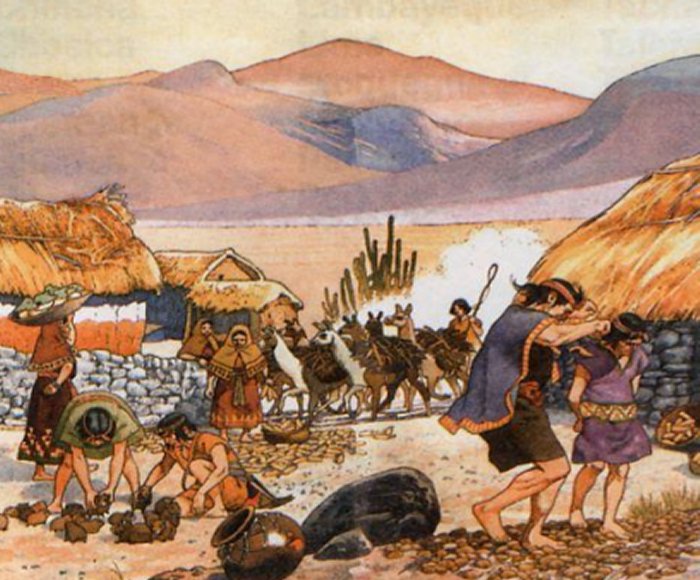 Inca community of Ayllu. source
Inca community of Ayllu. source
This form of organized society was particularly significant in Peru and Bolivia. The ayllu tradition existed and functioned well before the Inca conquest and continues to exist today in Andean communities.
The ayllu ("enlarged community") was formed of a number of families related to one ancestor they had in common. Extended family groups could adopt non-related members who had to assume the full responsibility of membership. The ayllu members had mutual obligations to each other and were aware of their duties towards society and the nature surrounding them.
They owned a piece of land and worked together, farming it collectively. They were self-sufficient, cultivated much of their food, or traded for all the food they consumed.
They educated their children to continue this tradition.
The Inca people had to work together to build houses, care for large herds of animals, plant and plow fields, and maintain irrigation systems.
Inca Farmers, 1583. Incan farmers planting corn with the aid of an Andean foot plow. The first chronicle and good government (1583-1615) by Felipe Guaman Poma de Ayala. Source:
Their duty was also to work for the government and serve in the army; in the meantime, other ayllu members would come and perform the necessary work in the field.
Ayllus – Skilled Craftsmen
Not all ayllus worked in agriculture. Many others would specialize in manufacturing pottery, jewelry, or clothing.
Necessary skills were transferred from generation to generation within the same ayllu. Ayllus produced virtually anything essential for everyday living, which the state would distribute to other ayllus.
The abundance and diversity of resources and their availability during bad crops and war made the population loyal to the Sapa Inca and the local government.
Kurakas, 'Huaca' Tradition And Marriage
Kurakas (also known as 'Karakas') were leaders at the head of the ayllu community.
As Rebecca M. Seaman writes in "Conflict in the Early Americas," they were "… responsible for organizing the varying ayllus for the purpose of land distribution, farming, public works, and other communal purposes. In this manner, family kinship groups [ayllus] labored, celebrated, worshiped, and paid tribute together as a unit.
However, it was the combined contributions of the varying ayllus that helped sustain the greater community…"
Karakas also provided chicha corn beer and food for all during religious celebrations. Reciprocity was expected from all of the leaders as a reward for the Ayllu's hard work. The payment for this work was usually in the form of the same service or could be the exchange of a product of some kind, a textile, or sometimes even food.
The ayllus members had their own huaca (or wak'a), or minor deity, usually embodied in a physical object such as a rock or mountain. As to the ayllus marriage traditions, they were required to marry someone from their own ayllu.
Like all self-sustaining communities, the Ayllu also had specific problems they could only solve with a helping hand. In the case of natural disasters, for example, farmers within the Ayllu community could not feed their families. In that case, they had to rely on the Inca storehouse system.
Written by – A. Sutherland - AncientPages.com Senior Staff Writer
Updated on January 24, 2024
Copyright © AncientPages.com All rights reserved. This material may not be published, broadcast, rewritten or redistributed in whole or part without the express written permission of AncientPages.com
Expand for referencesMore From Ancient Pages
-
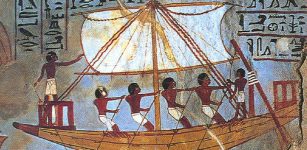 Mysterious Sherbrooke Stones – Did Africans Visit North America 2,500 Years Ago?
Artifacts | Nov 23, 2017
Mysterious Sherbrooke Stones – Did Africans Visit North America 2,500 Years Ago?
Artifacts | Nov 23, 2017 -
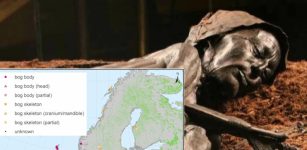 1,000 Bog Bodies From Across Scandinavia Reveal More Ancient Secrets – Here’s What Scientists Found
Archaeology | Mar 20, 2023
1,000 Bog Bodies From Across Scandinavia Reveal More Ancient Secrets – Here’s What Scientists Found
Archaeology | Mar 20, 2023 -
 Mystery Of The Man Whose Supernatural Abilities Still Captivate Scientists
Featured Stories | Jan 16, 2023
Mystery Of The Man Whose Supernatural Abilities Still Captivate Scientists
Featured Stories | Jan 16, 2023 -
 Unexpected Discovery 130,000-Year-Old Neanderthal Stone Tools In Poland
Archaeology | Oct 30, 2023
Unexpected Discovery 130,000-Year-Old Neanderthal Stone Tools In Poland
Archaeology | Oct 30, 2023 -
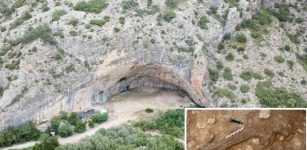 Rare Upper Paleolithic Human Remains Discovered In The Iberian Peninsula
Archaeology | Aug 12, 2021
Rare Upper Paleolithic Human Remains Discovered In The Iberian Peninsula
Archaeology | Aug 12, 2021 -
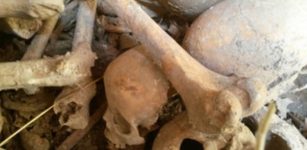 Roman-era mass grave with 60 bodies found in farmer’s field
Civilizations | Aug 27, 2015
Roman-era mass grave with 60 bodies found in farmer’s field
Civilizations | Aug 27, 2015 -
 Vatican Secrets – Dangerous Knowledge And Invention That Could Alter History
Ancient Mysteries | Dec 14, 2018
Vatican Secrets – Dangerous Knowledge And Invention That Could Alter History
Ancient Mysteries | Dec 14, 2018 -
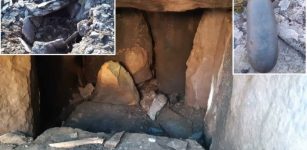 Ancient Bronze Age Tomb With Highly Unusual Features – Discovered On Dingle Peninsula, Ireland
Archaeology | Apr 29, 2021
Ancient Bronze Age Tomb With Highly Unusual Features – Discovered On Dingle Peninsula, Ireland
Archaeology | Apr 29, 2021 -
 Hyksos: 15th Dynasty Rulers Of Ancient Egypt, Were An Internal Takeover
Archaeology | Jul 15, 2020
Hyksos: 15th Dynasty Rulers Of Ancient Egypt, Were An Internal Takeover
Archaeology | Jul 15, 2020 -
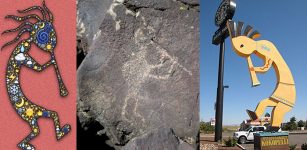 Kokopelli – Popular Trickster God Of The American Southwest Brought Happiness To People
Featured Stories | May 11, 2020
Kokopelli – Popular Trickster God Of The American Southwest Brought Happiness To People
Featured Stories | May 11, 2020 -
 Violence Was Widespread In Early Farming Society – New Study
Archaeology | Jan 23, 2023
Violence Was Widespread In Early Farming Society – New Study
Archaeology | Jan 23, 2023 -
 Orthodox Church In Black Sea Region Looted By Treasure Hunters
Archaeology | Feb 24, 2021
Orthodox Church In Black Sea Region Looted By Treasure Hunters
Archaeology | Feb 24, 2021 -
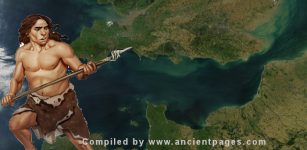 Undiscovered Neanderthal Artifacts From The Ice Age Are Submerged Below The Waves Of The English Channel
Archaeology | Nov 23, 2022
Undiscovered Neanderthal Artifacts From The Ice Age Are Submerged Below The Waves Of The English Channel
Archaeology | Nov 23, 2022 -
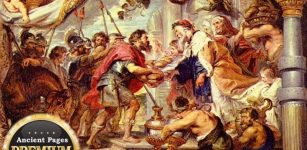 Mysterious Melchizedek: ‘King Of Righteousness’ And Heavenly High Priest In Bible And Dead Sea Scrolls
Biblical Mysteries | Sep 2, 2017
Mysterious Melchizedek: ‘King Of Righteousness’ And Heavenly High Priest In Bible And Dead Sea Scrolls
Biblical Mysteries | Sep 2, 2017 -
 Unusual Viking Secret Hidden Underground In California Reminds Of A Similar Discovery In Colorado
Featured Stories | Sep 12, 2024
Unusual Viking Secret Hidden Underground In California Reminds Of A Similar Discovery In Colorado
Featured Stories | Sep 12, 2024 -
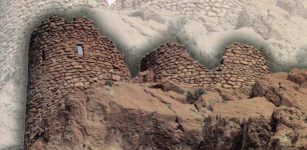 Mythical Temple Of Wingded Warrior God Haldi In The ‘City Of The Raven’
Civilizations | Jul 21, 2016
Mythical Temple Of Wingded Warrior God Haldi In The ‘City Of The Raven’
Civilizations | Jul 21, 2016 -
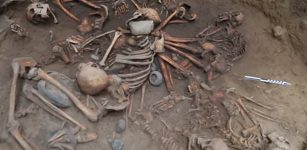 Linked Human Skeletons Lying In Spiral Circle Unearthed In Pre-Aztec Burial Pit Near Mexico City
Archaeology | Feb 7, 2018
Linked Human Skeletons Lying In Spiral Circle Unearthed In Pre-Aztec Burial Pit Near Mexico City
Archaeology | Feb 7, 2018 -
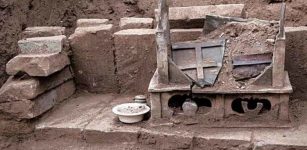 Does This Ancient Box Contain Buddha’s Cremated Remains?
Archaeology | Nov 15, 2017
Does This Ancient Box Contain Buddha’s Cremated Remains?
Archaeology | Nov 15, 2017 -
 Puzzling Palpa Lines In Peru Made By The Paracas Culture Are Even Older Than The Nazca Lines
Featured Stories | Jan 2, 2018
Puzzling Palpa Lines In Peru Made By The Paracas Culture Are Even Older Than The Nazca Lines
Featured Stories | Jan 2, 2018 -
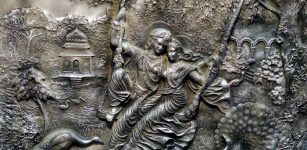 Mysterious Forest Of Treasure – Why Is It Forbidden To Stay In Nidhivan After Sunset?
Featured Stories | Nov 24, 2021
Mysterious Forest Of Treasure – Why Is It Forbidden To Stay In Nidhivan After Sunset?
Featured Stories | Nov 24, 2021

